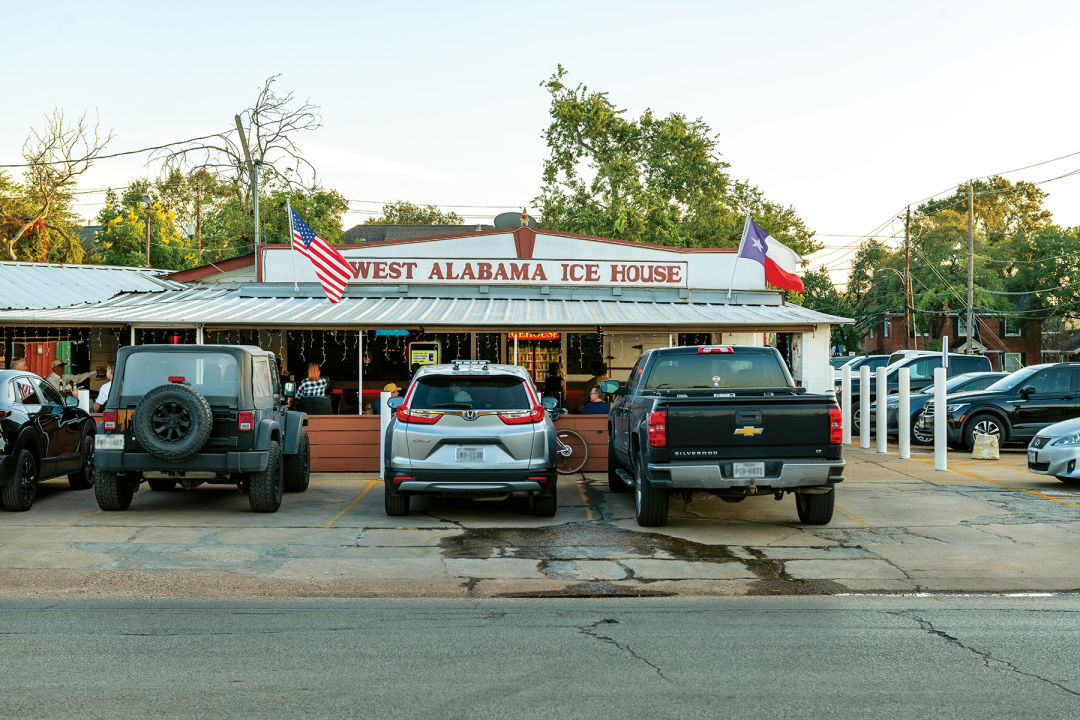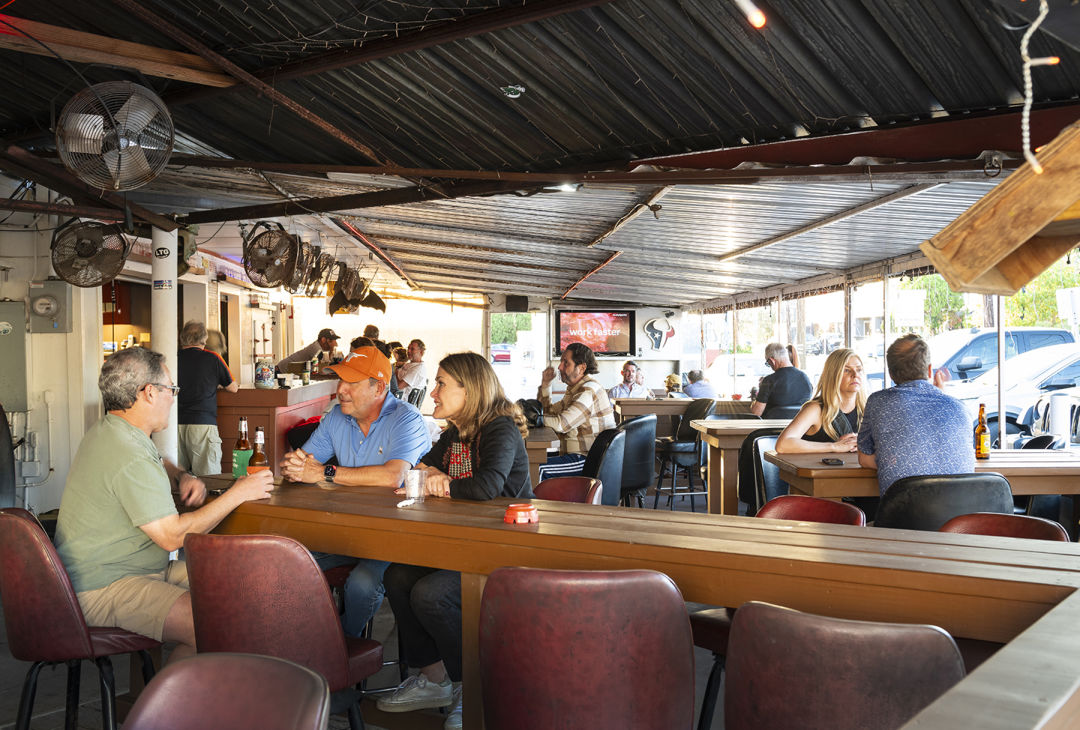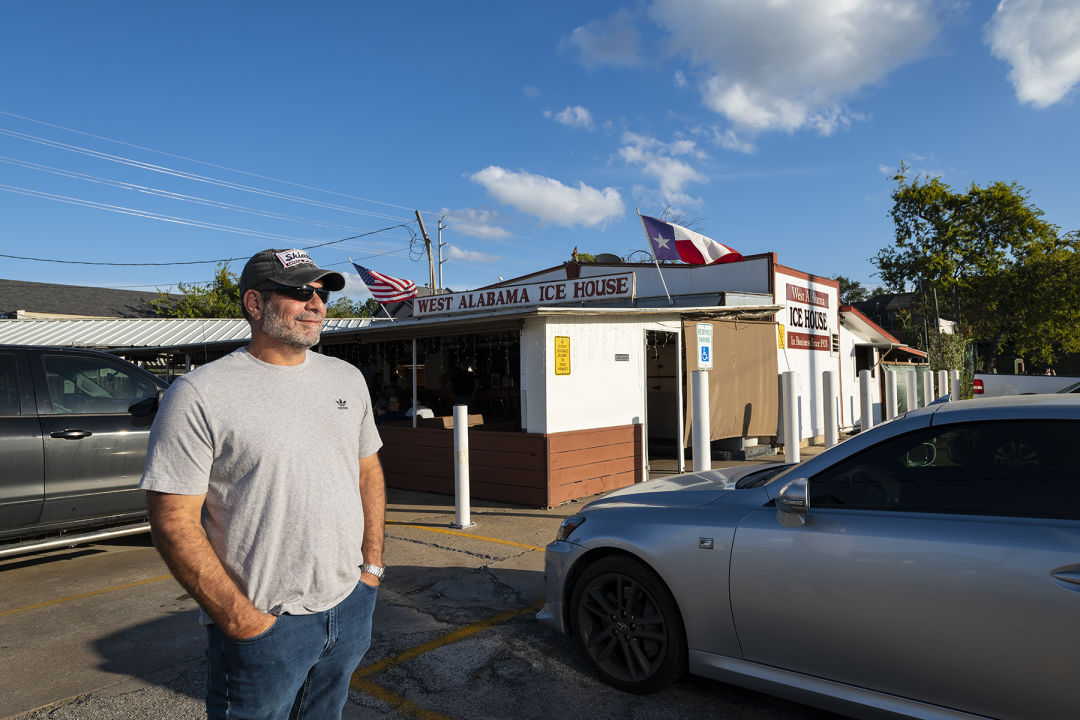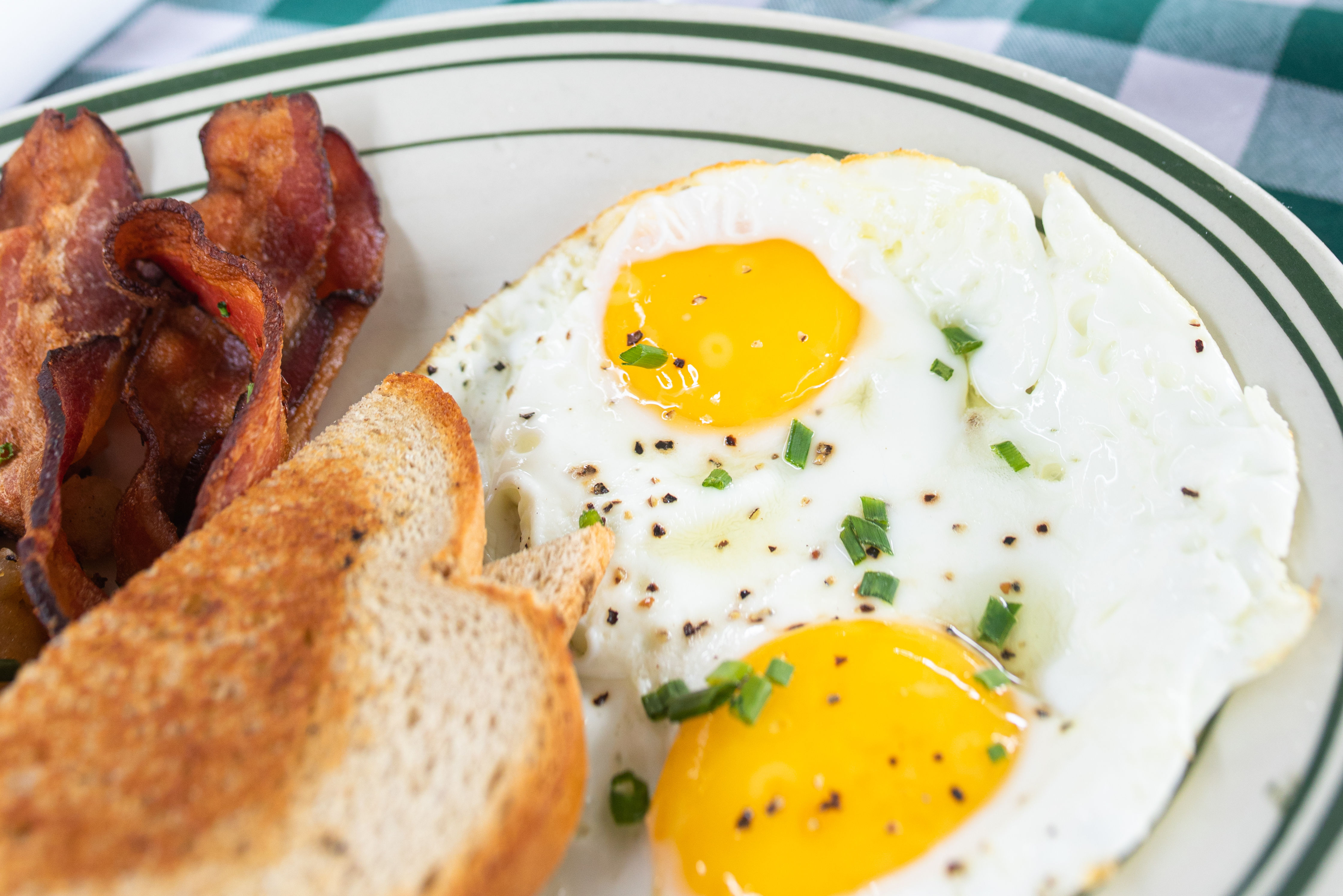A Deep Dive Into the History of West Alabama Ice House

Image: Anthony Rathbun
The Classics is an occasional series that spotlights and celebrates Houston’s oldest bars and restaurants.
When you think of Montrose, you probably picture a neighborhood with an ever-changing scene of new bars and restaurants popping up—and old favorites closing—especially in recent years. Despite all the change, there’s been one constant in the neighborhood’s century-long history: West Alabama Ice House.
The local staple is a backbone to the community, but it wasn’t always the watering hole it is today. To understand the bar’s rise to Houston fame, owner Petros Markantonis says you have to understand his family’s history first, which takes us all the way to Greece.
Petros’s father, Jerry Markantonis, was in the Communist resistance in his home island of Kefalonia. He was able to get himself and some buddies off the island and onto a ship to Italy, then to Baltimore. After arriving in the United States, Jerry joined the army, and eventually made his way down to the Bayou City to enroll at the University of Houston, where he met his wife. They got married and had Petros and his siblings.
At first, Jerry was living a typical life, working an office job and putting his geology degree to use, but Petros says his father quickly realized he wasn’t a fan of the nine-to-five life. Jerry decided to work at gas stations, and from there got into the hospitality business in the 1980s with his own bar downtown, the Golden Stein.
Petros says the area was dangerous at the time, and people were worried about being mugged or murdered at night. This prompted Jerry to venture outside downtown, and thanks to a friend, he was introduced to the property that is now West Alabama Ice House; he fixed up the exterior to make it welcoming for business, then handed over the keys to his son.
“I was 18 years old, and my father told me to give notice at the gas station I was working in myself because he said he needed help to run the new bar,” Petros says. “So my dad gave me the keys and a .38 snub nose and said ‘you’re gonna run the icehouse, and I’m gonna run the bar downtown.’”
What that teenage boy didn’t realize then is that he was about to open one of Houston’s most iconic bars.
West Alabama Ice House has mastered the art of creating community with zero frills. The white-and-red shack has retained its rustic, old-timey feel. The bar’s expansive outdoor space is filled with picnic tables and TVs that stream sports games. People can play a round of pool and other lawn games. It’s become a go-to spot for hosting gatherings and other special occasions, or just kicking back a Lone Star after work.

Image: Anthony Rathbun
Even if you’ve never been, you've likely seen its famous marquee sign, which displayed shout-outs, happy birthdays, and funny messages (a quick Google search of these will have you giggling). Unfortunately, this piece of Houston history was lost to the derecho, but we hope it’ll make a comeback soon.
The bar wasn’t always serving the hip young adults of today’s Montrose. When Petros began working at the icehouse, Montrose was mainly an area where retirees lived. At first, much of his clientele were older men who would come in for a drink and strike up conversations with him. It was during one of these many conversations that he learned more about the building’s history, and realized it was much more than just another fixer-upper—it told the story of how Montrose used to be.
The area became a neighborhood in 1911, and at the time was about as far out as Houston went. According to the folks who told Petros these stories, it was referred to as “the boondocks.” Back then, icehouses were created because people didn’t have air-conditioning or refrigeration in their homes. These establishments began as places to buy ice to preserve food, but they eventually evolved into gathering spaces where residents could cool down in the heat of the day, have a drink, and hang out with neighbors to pass the time (Houston summers must’ve been even more brutal than they are now with the lack of AC).
In 1928, West Alabama first opened as a literal icehouse, also serving as an early-day gas station and garage. If you sit at the bar, you’ll still be able to see the garage-like structure, which was big enough to pull a Ford Model T into the front door.
As time went on, icehouses evolved into “drive-ins,” where people would tailgate with friends and drink beer. In 1985, when Petros took over the location, it was known as the West Alabama Drive-In, but after learning more about the original purpose, he decided to freehand “Ice House” on its sign, keeping the history of the place alive.
The last almost 40 years have taught Petros patience and granted him the ability to not only travel back home to Greece every year to see family, but also do what every father wants: put his kids through school and college.
“It’s been a struggle, but I don’t think I would trade it for anything,” he says. “It’s been a lot of fun, and it’s also changed who I am as a person. When I first started working here, I was a shy kid, but the bar helped make me more social, outgoing, and aware of the people in need around me.”

Image: Anthony Rathbun
Just like with any other business, Petros says there have been several growing pains along the way. It’s been hard to keep up with the increasing number of bars that have opened in the area that have more parking and offer liquor, something he refuses to do since West Alabama has always been a beer joint. Plus, he finds beer easier to monitor for customer safety.
However, he does recognize that it’s important to keep up with the times, especially given the shift he’s seen in clientele—and he has the help of his oldest daughter, Tasia, to do so. Petros estimates that 90 percent of his customers are people between the ages of 21 and 40. Patrons can now find an expanded menu of ciders, seltzers, and of course, craft beer, including more niche styles like sours. The icehouse has even leveled up its nonalcoholic offerings in recent years, particularly during Dry January.
“It really makes a difference having a menu that appeals to all the different age groups,” he says.
While they don’t have a kitchen, anyone who finds themself with a case of the munchies can bring over tacos from Tacos Tierra Caliente, the popular food truck next door, or wait for the tamale guy to come around (hot tip: Order the venison tamales).
Of course, the biggest growing pain of all is the unprecedented chaos that has ensued over the last four years, from the pandemic and Winter Storm Uri to the derecho and Hurricane Beryl. Petros thinks the bar has been able to persevere because it’s an established name in Houston, and he does what he can to continually improve the building and its backyard. He also fosters a sense of camaraderie, and in Houston, one of the many things we value above all is community.
After the July hurricane, while everyone was out of power, the bar was one of the lucky ones with its lights still on. So funnily enough, it functioned similarly to how it did in the 1920s: With no power at home, residents went to hang out and drink some beer.




